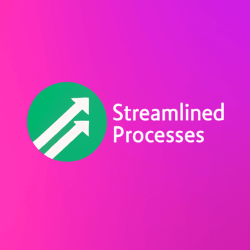For Payment Processing Systems, see our main page here.
Understanding Today’s Payment Processing Systems
In our fast-paced digital economy, Payment Processing Systems are the backbone of every successful transaction. Whether you’re buying a coffee or funding an online subscription, a payment processor is quietly working behind the scenes. These systems authorize, verify, and complete transactions between buyers and sellers within seconds—or even faster.
Most importantly, Payment Processing Systems ensure transactions are secure, compliant, and efficient. As consumer expectations shift toward instant payments and seamless online shopping, understanding how these systems evolve can help any business stay competitive.
How Payment Processing Systems Work
When a customer swipes a card, taps a phone, or uses an online checkout, several events happen in milliseconds. To clarify, here’s a brief breakdown:
- Authorization: The processor requests approval from the cardholder’s bank.
- Authentication: The system checks for fraud or unusual activity.
- Clearing and settlement: Funds move from buyer to seller and get recorded.
Each step must be accurate and secure. As a result, Payment Processing Systems partner with banks, networks, and payment gateways to get the job done.
Key Players Behind the Scenes of Modern Payments
Several participants are involved in processing each transaction:
- Merchant: The business accepting payments.
- Customer: The person making the payment.
- Payment processor: The technology provider handling data exchange.
- Payment gateway: The encrypted bridge between the merchant and processor.
- Issuing bank: The bank backing the customer’s card.
- Acquiring bank: The bank receiving the funds on behalf of the merchant.
So, coordination among them is essential. A delay or error in one step could halt an entire transaction.
Types of Payment Processing Systems Available
Not all systems are built alike. Some specialize in in-store retail, while others focus on mobile or international transactions. Below are the most common types businesses use today:
- Point-of-Sale (POS) Systems: Physical card readers commonly used in retail.
- Online Payment Gateways: Ideal for ecommerce websites and digital subscriptions.
- Mobile Payments: Apps like Apple Pay, Google Pay, or Venmo facilitate peer-to-peer and in-store payments.
- Integrated SaaS Solutions: Platforms like Stripe and Square offer tools beyond simple transactions, such as invoicing and reporting services.
Choosing the right system means investigating transaction fees, ease of use, customer support, and security compliance such as PCI-DSS.
Why Businesses Depend on Reliable Payment Processing Systems
Fast, secure payments improve customer satisfaction. But the impact of Payment Processing Systems runs deeper:
- They minimize fraud using tokenization and encryption technologies.
- They shorten checkout times, both online and offline.
- They allow businesses to accept multiple payment types, including digital wallets and cryptocurrencies.
- They offer real-time analytics and insights for better decision-making.
Moreover, a good processing system helps build trust with your customers. If people feel their data is safe, they’re more likely to return.
Case Study: How a Coffee Shop Boosted Revenue Using Smarter Payment Tools
Consider a local coffee shop in Austin, Texas. For years, they accepted only cash and checks—a process slow and risky. After switching to a cloud-based POS system integrated with a mobile app, sales rose by 22% over six months.
Customers appreciated the contactless options and faster service. Staff spent less time handling cash and more time preparing orders. Plus, the built-in reporting helped the owner identify peak hours, reduce waste, and customize promotional offers.
This success story highlights how Payment Processing Systems can become a growth tool, not just a backend necessity.
Trends Shaping the Future of Payment Processing Systems
Technology never stands still, and neither do Payment Processing Systems. Some key developments include:
- AI and Machine Learning: Used to detect fraudulent behavior in real time.
- Biometric Payments: Fingerprints and facial recognition are replacing traditional PINs and passwords.
- Cryptocurrency Adoption: Platforms now support Bitcoin, Ethereum, and stablecoins.
- Cross-Border Expansion: Tools that handle multi-currency transactions and automatic currency conversion.
- Embedded Payments: Payment features baked into software platforms such as CRMs and ERPs.
In short, these changes reflect rising customer expectations and an increasingly global economy.
Common Mistakes to Avoid When Selecting a Processing System
Even experienced business owners can get tripped up when choosing a provider. To avoid missteps, steer clear of the following:
- Ignoring hidden fees: Transaction and gateway charges add up.
- Overlooking user experience: Complicated checkouts drive customers away.
- Skipping security evaluations: Always look for PCI-DSS compliance and fraud detection tools.
- Not planning for scale: Your processing needs today may differ tomorrow.
Therefore, do your homework, read the fine print, and ask for demos before locking into a contract.
FAQ: What People Ask Most About Payment Processing Systems
What processing system is best for small businesses?
Cloud-based systems like Square or Shopify are great for startups and small merchants. They’re easy to set up and scale affordably.
How secure are modern Payment Processing Systems?
Security has improved drastically with encryption, tokenization, and biometric verification. Still, merchants must ensure they meet compliance standards.
Are there options for international payments?
Yes. Stripe, PayPal, and others offer currency conversion, cross-border compliance, and global merchant accounts.
Can I accept crypto with a traditional processor?
Some modern processors now support crypto. Coinbase Commerce and BitPay are popular integrations for ecommerce sites.
In Conclusion: The Role of Technology and Trust
Payment Processing Systems are more than digital cash registers. They’re vital tools for building customer trust, ensuring financial security, and growing your business. Whether accepting a single payment or thousands per hour, you need a solution that supports security, speed, and flexibility.
This article was created with the assistance of AI tools and reviewed by our team at Streamlined Processes LLC to ensure accuracy and relevance.
Follow us on Facebook here.

